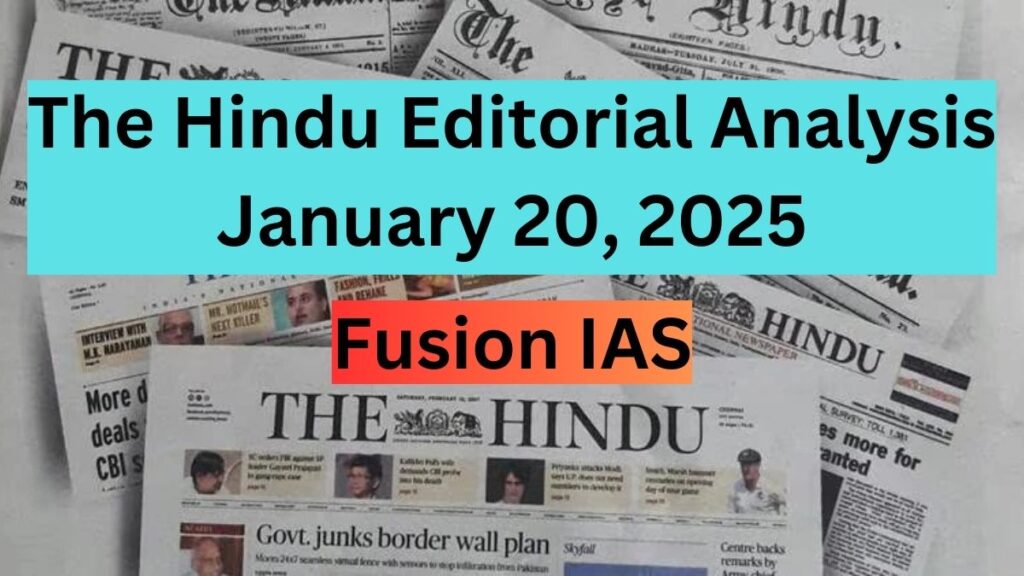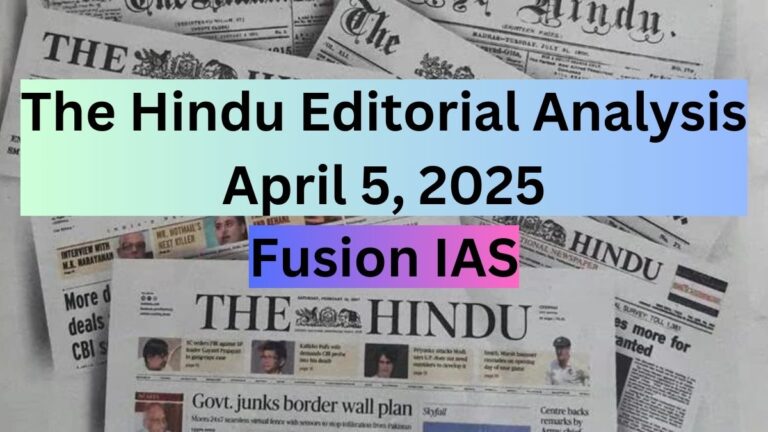
The Hindu editorials are a crucial resource for understanding key national and international issues. This analysis simplifies complex topics, highlights key points, and offers critical insights, making it an essential tool for competitive exam preparation like UPSC CSE and developing a well-rounded perspective on current affairs.
1. A surge in radical governments, the hope of democracy
The rise of radical governments globally poses significant challenges to international stability and India’s regional security. Bangladesh’s current political crisis highlights the complex interplay of democracy, extremism, and bilateral relations, emphasizing India’s role in maintaining peace and stability in its neighborhood.
1. Global Trend: Radical Governments and Their Acceptance
- Legitimization Post-Power Seizure: Radical groups often face resistance until they seize power; once in control, they may gain international recognition.
- Examples:
- Afghanistan, 2021: Taliban’s rise to power led to international engagement despite their history of extremism.
- Syria, 2024: Radical leader al-Jolani’s rise, with Western powers removing sanctions and bounties.
2. India’s Diplomatic Actions
- UNSC Leadership in 2021:
- India presided over UNSC during the Taliban takeover, influencing Resolution 2593 to include concerns about terrorism emanating from Afghanistan.
- Highlighted Pakistani-linked terror groups like Lashkar-e-Taiba and Jaish-e-Mohammed.
- Support to Bangladesh in 2009: India backed Sheikh Hasina’s government post-elections and the Bangladesh Rifles (BDR) revolt, strengthening democracy.
3. Bangladesh: Current Crisis and Concerns
- 2024 Political Crisis:
- Military coup led by Muhammad Yunus has sidelined Sheikh Hasina’s government, with alleged support to radical groups.
- Groups involved: Jamaat-e-Islami, Islami Chhatra Shibir, Ansarullah Bangla Team (ABT), and ISKP.
- Anti-India Sentiments: Radical groups are leveraging the situation to incite anti-India rhetoric.
- India’s Stance: Continues engaging with the interim government, emphasizing bilateral ties while monitoring extremist activities.
4. Lessons from the Past
- Rise of Democracy in Bangladesh (2008): Fair elections rejected radical elements like Jamaat-e-Islami.
- Global Patterns of Religious Hate: India flagged rising religiophobia against Hindus, Sikhs, and Buddhists at the UN in 2021-22.
5. Challenges and Strategic Implications
- Regional Instability:
- Islamic radicalism in Bangladesh could destabilize the region, affecting India’s national security.
- Comparisons with Syria and Afghanistan highlight the potential for long-term challenges.
- Water Sharing Disputes: Teesta river water-sharing remains an unresolved bilateral issue.
6. The Way Forward
- Focus on Democracy: India supports democratic governance in Bangladesh to prevent further radicalization.
- Bilateral Cooperation: Strengthening ties and resolving disputes like water sharing can reduce vulnerabilities.
- Monitoring Extremism: Vigilance against groups exploiting the political vacuum to spread extremism.
7. Broader Observations
- The rise of extremist groups globally reflects the need for a balanced approach to foreign policy, considering both security and democratic values.
- India’s regional leadership and strategic positioning remain crucial in countering threats posed by radicalism.
2. Recasting insolvency resolution
The Jet Airways case highlights the need for India’s insolvency regime to evolve beyond mere debt resolution and serve as a proactive driver of economic rejuvenation. India’s Insolvency and Bankruptcy Code (IBC), introduced in 2016, aimed to address insolvency challenges with a structured and timely approach, but institutional inefficiencies have hindered its full potential.
Key points:
- NCLT and NCLAT Issues: The National Company Law Tribunal (NCLT) faces heavy burdens, handling both insolvency cases and corporate matters. The structure, established in 1999 and operationalised in 2016, is outdated, resulting in delays and inefficiencies in insolvency resolutions.
- Delayed Timelines: The average time for insolvency resolutions has increased to 716 days in FY2023-24, up from 654 days in FY2022-23, despite calls for adherence to specific timelines.
- Lack of Domain Expertise: NCLT members often lack the specialised knowledge required to handle complex insolvency matters, as highlighted by the Jet Airways case.
- Bureaucratic Inefficiencies: The absence of an effective system for urgent listings and wide discretionary powers of registry staff lead to delays and the defiance of court orders.
- Limited Alternative Dispute Resolution (ADR): The procedural framework mandates hearings for all applications, even those not needing a hearing, contributing to further delays. The system underutilises ADR mechanisms.
- Proposed Solutions: Reforms such as mandatory mediation before insolvency filings and specialised benches for different cases can enhance efficiency. A hybrid model combining judicial experience and domain expertise is crucial for progress.
- Infrastructure Needs: Proper courtrooms, permanent support staff, and infrastructure must be prioritised to sustain the insolvency system.
India’s insolvency regime must not only resolve debt issues but also foster economic recovery, essential for attracting foreign investment. The current challenges underline the need for significant reforms to ensure the system’s efficiency and effectiveness.
3. Pyrrhic peace: On the Hamas-Israel ceasefire
- Ceasefire Agreement: After 15 months of war, Hamas and Israel have agreed to a ceasefire that took effect on January 19, 2025, bringing much-needed relief to Gaza’s 2.3 million Palestinians. The ceasefire is not permanent, but it marks a significant pause in the violence.
- Phases of the Ceasefire: The ceasefire is structured in three phases:
- Phase 1: Hamas releases 33 hostages, and Israel releases around 1,000 Palestinian prisoners.
- Phase 2: More exchanges of hostages and prisoners, with both sides agreeing to a permanent cessation of hostilities.
- Phase 3: Discussions on the future governance of Gaza, including who should be in charge.
- Military Objectives and Outcomes: Israel’s initial goals were the destruction of Hamas and the release of hostages. While Israel degraded Hamas’s infrastructure, it failed to completely destroy the group or secure the release of all hostages. Hamas has adapted and remains a formidable force.
- Negotiation Challenges: The next phases of the ceasefire may face difficulties, especially regarding Israel’s objectives and Hamas’s demands. Hamas insists on a full Israeli withdrawal from Gaza.
- Future Governance of Gaza: Israel is unlikely to accept Hamas as the ruling force in Gaza. A pragmatic solution involves forming a united administration of Palestinian factions under the internationally recognized Palestinian Authority. This would provide a foundation for Gaza’s reconstruction.
- Israel’s Role: For the peace process to succeed, Israel should be prepared to withdraw all its troops from Gaza, creating space for the Palestinian Authority to take leadership and rebuild Gaza.
- International Role: International mediators play a critical role in facilitating dialogue and bridging gaps in the post-war scenario. Both Israel and Palestinian factions, alongside international partners, must work together to find a lasting resolution.
This ceasefire provides an opportunity to work toward a more sustainable peace, but challenges remain, especially regarding the political future of Gaza.
Disclaimer:
This analysis is based on the editorial content published in The Hindu and is intended solely for informational and educational purposes. The views, opinions, and interpretations expressed herein are those of the author of original article. Readers are encouraged to refer to the original article for complete context and to exercise their own judgment while interpreting the analysis. The analysis does not constitute professional advice or endorsement of any political, economic, or social perspective.
Follow Fusion IAS


